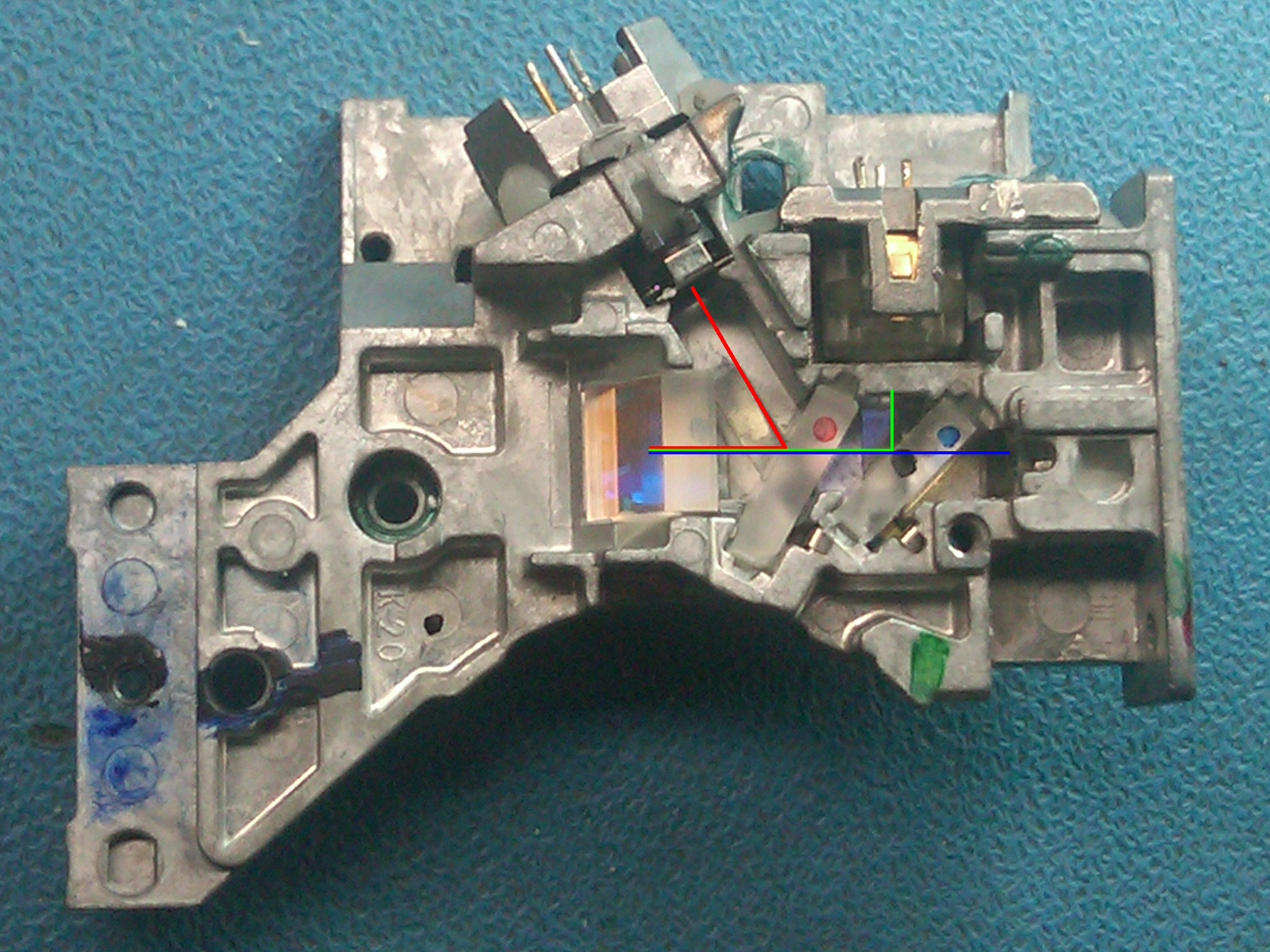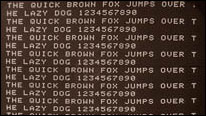|
Programme Delivery Control
Programme delivery control (PDC) is specified by the standard ETS 300 231 (ETSI EN 300 231), published by the European Telecommunications Standards Institute (ETSI). This specifies the signals sent as hidden codes in the teletext service, indicating when transmission of a programme starts and finishes. PDC (also known as Enhanced Teletext Packet 8/30 Format 2) is often used together with StarText, enabling the user to select a programme to record using specially coded teletext programme listings. The combination of features is often called PDC/StarText. In Germany and some other European countries, the older standard video programming system (VPS) is in use also known as format 2. Effectively, the two systems do the same thing and most modern VCRs and stand-alone DVD recorders work with both signals. The VPS system was invented by Mit-hat Sheqerolli in April 1983 under the name of "Run-time controller for the recordings of television programmes by means of a videorecorder". In ... [...More Info...] [...Related Items...] OR: [Wikipedia] [Google] [Baidu] |
Medion MD8910 - Siemens SDA 5650-8004
Medion AG is a German consumer electronics company, and a subsidiary of Chinese multinational technology company Lenovo. The company operates in Europe, Turkey, Asia-Pacific, United States and Australia regions. The company's main products are computers and notebooks, but also smartphones, tablet computers, digital cameras, TVs, refrigerators, toasters, and fitness equipment. Products Medion products in Australia and the United States are available exclusively at Aldi and Super Billing Computers, with some products (such as DVD players) branded as ''Tevion'' (Aldi's own brand). Some of Medion's formal laptops were sold in North America at Best Buy stores and were sold in Canada at Future Shop as Cicero Computers. In the United Kingdom, Medion products, including laptop and desktop computers, have been sold by Aldi, Sainsbury's, Somerfield, Woolworths, and Tesco, as well as being sold direct through Medion's own Web site and various other online retailers. Medion laun ... [...More Info...] [...Related Items...] OR: [Wikipedia] [Google] [Baidu] |
Standardization
Standardization or standardisation is the process of implementing and developing technical standards based on the consensus of different parties that include firms, users, interest groups, standards organizations and governments. Standardization can help maximize compatibility, interoperability, safety, repeatability, or quality. It can also facilitate a normalization of formerly custom processes. In social sciences, including economics, the idea of ''standardization'' is close to the solution for a coordination problem, a situation in which all parties can realize mutual gains, but only by making mutually consistent decisions. History Early examples Standard weights and measures were developed by the Indus Valley civilization.Iwata, Shigeo (2008), "Weights and Measures in the Indus Valley", ''Encyclopaedia of the History of Science, Technology, and Medicine in Non-Western Cultures (2nd edition)'' edited by Helaine Selin, pp. 2254–2255, Springer, . The centralized we ... [...More Info...] [...Related Items...] OR: [Wikipedia] [Google] [Baidu] |
European Telecommunications Standards Institute
The European Telecommunications Standards Institute (ETSI) is an independent, not-for-profit, standardization organization in the field of Information and communications technology, information and communications. ETSI supports the development and testing of global technical standards for ICT-enabled systems, applications and services. Overview ETSI was set up in 1988 by the European Conference of Postal and Telecommunications Administrations (European Conference of Postal and Telecommunications Administrations, CEPT) following a proposal from the European Commission. ETSI is the officially recognized body with a responsibility for the standardization of Information and Communication Technologies (ICT). It is one of the three bodies, the others being European Committee for Standardization, CEN and CENELEC, officially recognized by the European Union as a European Standards Organization (ESO). The role of the European Standards Organizations is to support EU regulation and poli ... [...More Info...] [...Related Items...] OR: [Wikipedia] [Google] [Baidu] |
Teletext
A British Ceefax football index page from October 2009, showing the three-digit page numbers for a variety of football news stories Teletext, or broadcast teletext, is a standard for displaying text and rudimentary graphics on suitably equipped television sets. Teletext sends data in the broadcast signal, hidden in the invisible vertical blanking interval area at the top and bottom of the screen. The teletext decoder in the television buffers this information as a series of "pages", each given a number. The user can display chosen pages using their remote control. In broad terms, it can be considered as Videotex, a system for the delivery of information to a user in a computer-like format, typically displayed on a television or a dumb terminal, but that designation is usually reserved for systems that provide bi-directional communication, such as Prestel or Minitel. Teletext was created in the United Kingdom in the early 1970s by John Adams, Philips' lead designer for video di ... [...More Info...] [...Related Items...] OR: [Wikipedia] [Google] [Baidu] |
Videocassette Recorder
A videocassette recorder (VCR) or video recorder is an electromechanical device that records analog audio and analog video from broadcast television or other source on a removable, magnetic tape videocassette Videotape is magnetic tape used for storing video and usually sound in addition. Information stored can be in the form of either an analog or digital signal. Videotape is used in both video tape recorders (VTRs) and, more commonly, videocasset ..., and can play back the recording. Use of a VCR to record a television program to play back at a more convenient time is commonly referred to as ''timeshifting''. VCRs can also play back prerecorded tapes. In the 1980s and 1990s, prerecorded videotapes were widely available for purchase and rental, and blank tapes were sold to make recordings. VCRs declined in popularity during the early 2000s and in July 2016, Funai Electric, the last manufacturer of them ceased production. History Early machines and formats The h ... [...More Info...] [...Related Items...] OR: [Wikipedia] [Google] [Baidu] |
DVD Recorder
A DVD recorder is an optical disc recorder that uses optical disc recording technologies to digitally record analog or digital signals onto blank writable DVD media. Such devices are available as either installable drives for computers or as standalone components for use in television studios or home theater systems. As of March 1, 2007 all new tuner-equipped television devices manufactured or imported in the United States must include an ATSC tuner. The US Federal Communications Commission (FCC) has interpreted this rule broadly, including apparatus such as computers with TV tuner cards with video capture ability, videocassette recorders and standalone DVD recorders. NTSC DVD recorders are undergoing a transformation, either adding a digital ATSC tuner or removing over-the-air broadcast television tuner capability entirely. However, these DVD recorders can still record analog audio and analog video. Standalone DVD recorders, alongside Blu-ray recorders, have been relati ... [...More Info...] [...Related Items...] OR: [Wikipedia] [Google] [Baidu] |
Freeview+
Freeview is the United Kingdom's sole digital terrestrial television platform. It is operated by Digital UK Ltd and DTV Services Ltd, a joint venture between the BBC, ITV, Channel 4, Channel 5 and Sky. It was launched on 30 October 2002, taking over the licence from ITV Digital which collapsed that year. The service provides consumer access via an aerial to the seven DTT multiplexes covering the United Kingdom. As of July 2020, it has 85 TV channels, 26 digital radio channels, 10 HD channels, six text services, 11 streamed channels, and one interactive channel. Delivery of standard-definition television and radio is labelled Freeview, while delivery of HDTV is called Freeview HD. Reception of Freeview requires a DVB-T/DVB-T2 tuner, either in a separate set-top box or built into the TV set. Since 2008 all new TV sets sold in the United Kingdom have a built-in Freeview tuner. Freeview HD requires a HDTV-capable tuner. Digital video recorders (DVRs) with a built-in Freeview tu ... [...More Info...] [...Related Items...] OR: [Wikipedia] [Google] [Baidu] |
Accurate Recording
Accuracy and precision are two measures of ''observational error''. ''Accuracy'' is how close a given set of measurements ( observations or readings) are to their ''true value'', while ''precision'' is how close the measurements are to each other. In other words, ''precision'' is a description of '' random errors'', a measure of statistical variability. ''Accuracy'' has two definitions: # More commonly, it is a description of only '' systematic errors'', a measure of statistical bias of a given measure of central tendency; low accuracy causes a difference between a result and a true value; ISO calls this ''trueness''. # Alternatively, ISO defines accuracy as describing a combination of both types of observational error (random and systematic), so high accuracy requires both high precision and high trueness. In the first, more common definition of "accuracy" above, the concept is independent of "precision", so a particular set of data can be said to be accurate, precise, both, ... [...More Info...] [...Related Items...] OR: [Wikipedia] [Google] [Baidu] |
Digital Video Broadcasting
Digital Video Broadcasting (DVB) is a set of international open standards for digital television. DVB standards are maintained by the DVB Project, an international industry consortium, and are published by a Joint Technical Committee (JTC) of the European Telecommunications Standards Institute (ETSI), European Committee for Electrotechnical Standardization (CENELEC) and European Broadcasting Union (EBU). Transmission DVB systems distribute data using a variety of approaches, including: * Satellite: DVB-S, DVB-S2, and DVB-SH ** DVB-SMATV for distribution via SMATV * Cable: DVB-C, DVB-C2 * Terrestrial television: DVB-T, DVB-T2 ** Digital terrestrial television for handhelds: DVB-H, DVB-SH * Microwave: using DTT ( DVB-MT), the MMDS ( DVB-MC), and/or MVDS standards (DVB-MS) These standards define the physical layer and data link layer of the distribution system. Devices interact with the physical layer via a synchronous parallel interface (SPI), synchronous serial i ... [...More Info...] [...Related Items...] OR: [Wikipedia] [Google] [Baidu] |
Ceefax
Ceefax (, punning on "seeing facts") was the world's first teletext information service and a forerunner to the current BBC Red Button service. Ceefax was started by the BBC in 1974 and ended, after 38 years of broadcasting, at 23:32:19 BST (11:32 PM BST) on 23 October 2012, in line with the digital switchover being completed in Northern Ireland.Pete Clifton Points of View 9 November 2008Test Cards and Ceefax BBC Archive To receive a desired page of text on a teletext-capable receiver, the user would enter a three-digit page number on the device. Once the page number was entered, the selected page would display on the user's screen upon its actual transmission, which would have required a wait of several seconds. There were many pages to choose from and they could be displayed either on a bl ... [...More Info...] [...Related Items...] OR: [Wikipedia] [Google] [Baidu] |
Television Technology
Large-screen television technology (colloquially big-screen TV) developed rapidly in the late 1990s and 2000s. Prior to the development of thin-screen technologies, rear-projection television was standard for larger displays, and jumbotron, a non-projection video display technology, was used at stadiums and concerts. Various thin-screen technologies are being developed, but only liquid crystal display (LCD), plasma display (PDP) and Digital Light Processing (DLP) have been publicly released. Recent technologies like organic light-emitting diode (OLED) as well as not-yet-released technologies like surface-conduction electron-emitter display (SED) or field emission display (FED) are in development to replace earlier flat-screen technologies in picture quality. Large-screen technologies have almost completely displaced cathode-ray tubes (CRT) in television sales due to the necessary bulkiness of cathode-ray tubes. The diagonal screen size of a CRT television is limited to abou ... [...More Info...] [...Related Items...] OR: [Wikipedia] [Google] [Baidu] |







